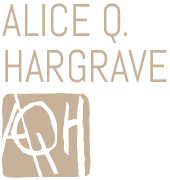Paradise Wavering
Paradise Wavering
Daylight Books
8.5 x 11.5 inches
137 pages, 61 color images
Hardcover
Published May 2016
PRE-ORDER NOW
TRADE EDITION: $45.00
SIGNED EDITION: $55.00
LIMITED EDITION: $100.00
Includes Signed Edition Monograph with a signed and numbered 8.5" x 11" archival pigment print (Edition of 50) on Hahnemuhle 308 rag paper.
CHOOSE IMAGE when you add to the cart
LIMITED EDITION: $500.00
Includes Signed Edition Monograph with a signed and numbered 13” x 19" archival pigment print (Edition of 25 ) on Hahnemuhle 308 rag paper.
CHOOSE IMAGE when you add to the cart
ALICE Q. HARGRAVE: PARADISE WAVERING
Essay by Allison Grant
Interview by Kendra Paitz
Poems by Sandra Binion and Ralph J. Mills Jr.
Two excerpts from Rebecca Solnit's seminal book A Field Guide to Getting Lost
Paradise Wavering is a photographic stream of consciousness that travels through lush flora, fauna, and tropical biospheres, exploring the fugitive nature of experience, time, light, and the photographic medium itself.
By interspersing her current photographs with re-photographed vintage source material from her own family archive of 8 mm films and snapshots, Alice Hargrave melds together past and present, while alluding to an uncertain future where environmental angst pervades.
Inspired by the heroic landscapes of early travel photography, vernacular family pictures, and the first color processes such as Autochromes, Hargrave embraces, but also re-contextualizes and reimagines, the clichés of documenting family travels, where photography's role is to harness the exotic or "Kodachrome" moments from a moving car. She seeks the sublime in moments on the periphery of daily life, and her liberal, intuitive use of vivid, visceral color inscribes emotion, revealing how photographs literally color memory and perception. Color itself becomes a subject, leaving behind its mood and patina as a shroud.
Alice Hargrave's resulting curvilinear narrative is fractured, frayed, and stained in color, as are memory and photographic substrates themselves.






